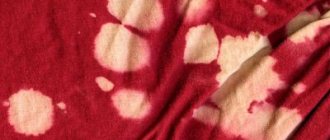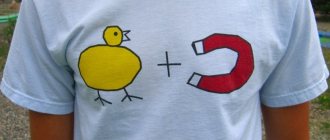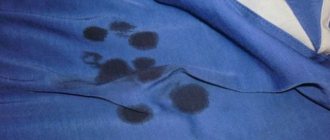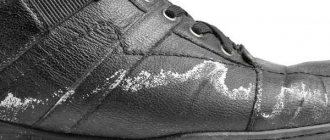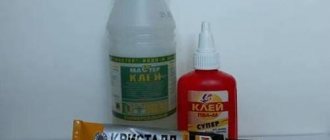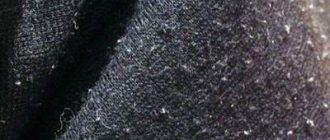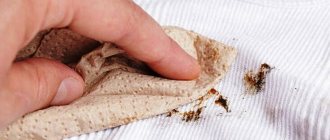Features of contamination from plasticine
The modern market offers a wide range of plasticine. Each of its types has its own properties and composition. Traditional sculpting material consists of natural ingredients including rubber, wax, clay, etc. The synthetic product is based on petroleum products.
The difficulty of removing plasticine stains from fabric depends on the properties of the material and its composition, as well as on the time and structure of the material. The longer the modeling substance remains on the surface, the more effort will have to be made to clean the carpet from plasticine and wash away its traces.
Items with long lint, including fur and wool, are the most difficult to clean. Fats and dyes are instantly absorbed into the loose fabric structure.
Silk helps repel dirt, but only partially. At the same time, it is undesirable to wet such matter. The easiest way to remove plasticine from a synthetic carpet. These products can be washed and treated with almost any composition and available means. In addition, they perfectly tolerate minor heat and sudden temperature changes.
Effective special products against plasticine on plastic and other surfaces
If none of the traditional methods bring results, try factory stain removers.
Plastic is a hard material; you will need hot water or a freezing aerosol to remove any remaining plasticine from it. If it is a toy, place it in a bowl of very hot water and clean it with a brush. You can add Vanish, Antipyatin to the water. Amway's pre-cleaning spray will help you wash plasticine off plastic products quickly and without soaking. The drug is used strictly according to the manufacturer's instructions. In most cases, it takes no more than 15-20 minutes to remove dirt. After treatment, rinse off the residue with water.
Detergent and an iron will help remove traces of creativity from a carpet or rug. Use special powder or foam from Vanish. Cleaning is carried out in stages.
- A sheet of highly hygroscopic paper or a paper towel is placed on the stain.
- Pass the hot iron platform over the paper several times.
- Make sure that the plasticine transfers to the paper.
- After treatment, it is recommended to clean with a brush or sponge using detergent.
- Blot excess moisture with a rag.
Cleaning wallpaper will require patience and care. It is difficult not to damage thin paper decor, but restoring the aesthetic appearance of non-woven fabric and vinyl is quite possible.
How to proceed:
- Attach the paper to the plasticine.
- Turn on the hair dryer and direct a hot stream of air to the problem area.
- The plasticine will gradually be absorbed into the paper napkin.
- The greasy stain should be wiped with a sponge or microfiber cloth moistened with a solution of soap or dishwashing gel.
- Wipe the wall dry.
If your child stains embossed wallpaper, try the following technique:
- Take a piece of white plasticine and knead it well in your hands until plasticity appears.
- Stick it on top of the colored stain.
- Quickly tear it off the surface.
- Repeat the steps until the problem disappears completely.
- If there is any trace of fat left, treat it with soapy water.
Metal, glass, and wooden surfaces are ideally cleaned by cooling and subsequent treatment with wet wipes, CHEWING GUM REMOVER, stain remover pencil from Unimax, Faberlic, EDELSTAR, MULTI PROFFESIONAL, Lil bully, Udalix, etc.
ICEMIX pharmacy spray is suitable for freezing.
Every family with small children has plasticine. Plastic, pleasant to the touch material is used to develop fine motor skills and creative abilities of the child. Overindulgence and inattention often lead to greasy substances getting onto clothes, which you can now quickly remove without leaving a memory of your baby’s mistake. Your secret is in the correct use of available tools.
The article has been verified by the editors
Cleaning methods
To remove plasticine from rugs or carpets, you can use available home recipes and specialized compounds.
It is better not to experiment with carpets made from valuable materials and entrust their processing to specialists. It is recommended to dry clean:
- handmade carpets made of silk;
- antiques, etc.
Professionals specializing in the maintenance of carpet products will quickly and efficiently perform the treatment. However, you will have to pay for their services.
Salt, powder, vinegar
If the contamination is small and fresh, after eliminating the main part, you should sprinkle a small amount of small salt crystals on it, rubbing them over the surface with a cloth soaked in water. Then you need to rub the salt into the pile with a foam sponge and wait about 4-6 minutes, then rinse the substance with water. If this technique does not help remove the plasticine, you can make your own cleaning paste from 1 tsp. table salt, 1 tsp. powder and 1 tsp. vinegar solution 6%.
The ingredients are mixed with each other in a common container until a paste-like mass is obtained. If the composition is too thick, it can be diluted with a small amount of heated water. The finished mixture is applied to problem areas and left to dry. After this, the composition is cleaned off with a stiff brush. After removing the product, the carpet or rug should be washed with any cleaning agent and clean water.
Soap solution
To remove plasticine from carpet, you can use a mixture of water and soap. But this home remedy only gets rid of small and superficial marks. To prepare the cleaning product, it is recommended to use ordinary household chalk. The solution is prepared according to the following scheme:
- Grind 30-40 g of soap on a fine grater.
- To the resulting shavings you need to add 100 ml of clean water.
- The mixture must be whipped until foam forms.
The finished composition is applied with a soft sponge to the contaminated area and left for 5-10 minutes. After this, it is washed off with slightly warm water.
When using this method, it is necessary to take into account that soap can change the color of the fabric, so after eliminating the dirt, the entire product must be cleaned.
Cold
If the molding material is already ingrained into the carpet fibers, it becomes more difficult to remove. The cold cleaning technique is based on the ability of plasticine to change its structure under the influence of low temperatures. As a result, the substance becomes less plastic. In winter, you can remove plasticine from hair or pile of products by sprinkling the problem area with snow. After the mass has hardened, it can be cleaned off with scissors, a spatula, a knife, etc.
Instead of snow, you can use ice cubes. To treat them, rub the contaminated area. The hardened plasticine is carefully scraped off with any sharp device. The cold method is good because it does not spoil the pile and color of the coating.
Detergent
To remove traces of plastic material, you can use a product designed for washing plates and glasses. You need to apply 5-6 drops of gel to the problem area and rub it in thoroughly with a soft sponge. The composition is left for 15-20 minutes, after which it is washed off and wiped dry.
Baking soda
To remove plasticine from rugs and carpets, you can use soda powder. To achieve maximum effect, you can add a little soap solution to it.
The product is poured onto the problem area, which should be pre-treated with a mixture of water and laundry soap. Then it is gently rubbed into the pile and left for 30-40 minutes. Remains of plasticine are cleaned off with a stiff brush. Then the problem area should be wiped with a dry cloth or napkin.
This technique is great for white surfaces because baking soda has a strong bleaching effect.
Warm iron
Under the influence of high temperature, plasticine becomes liquid and soft. This technique should be used only after the bulk of the contamination has been removed.
Otherwise, the procedure will have the opposite effect: the substance will melt and be even more absorbed into the tissue structure.
To remove traces of plastic material, you need to take a piece of paper and an iron. The paper is placed on the contaminated area and a slightly heated iron is passed over it. After the sheet gets dirty, replace it with another one and repeat the manipulation until the dirt disappears. Using this technique, you can quickly get rid of small marks that are difficult to remove manually.
Car interior cleaning products
Automotive chemicals contain degreasing ingredients and solvent substances. With their help, you can eliminate even old stains.
Automobiles can have different structures and release forms. Before using them, you must carefully study the instructions. Cleaning must be carried out taking into account the requirements and recommendations of the manufacturer.
In most cases, auto chemical products contain alcohols, which provoke the development of allergic reactions. Therefore, it is better to use them with protective gloves.
Rough cleaning
If other methods of removing plasticine from rugs and carpets do not help, you will have to resort to drastic methods. They are based on mechanical impact on the contaminated area. To begin with, large pieces of plasticine are removed from the coating using a sharp blade. The remaining substance is cleaned off with a stiff brush. You can remove dirt with pumice, fine-grained sandpaper and a manicure file. Each device needs to be rubbed over the problem area until the dirt is completely eliminated.
However, with this processing method there is a risk that the pile will be damaged. In addition, such aggressive effects should not be used to clean products made from natural fabrics.
Alcohol
This substance is an effective organic solvent. Alcohol destroys plasticine and reduces its adhesion to tissues. To remove contaminants, you can use medical ethanol or ordinary vodka.
A cotton sponge is soaked in the product and the problem area is treated. If necessary, repeat the procedure.
When using this method, it is necessary to take into account that alcohol dissolves not only the plastic mass, but also the dyes that are in the carpet pile. To avoid problems, you first need to try the effect of the substance on an inconspicuous place. If the paint has not darkened or lightened, the procedure can be continued.
Solvent
To remove plasticine, you can use gasoline, acetone or white spirit. Apply 5-7 drops of the substance to a small piece of cotton wool and gently rub it into the problem area. To eliminate traces, 3-4 treatments are enough.
Solvents have an aggressive effect not only on carpeting, but also on human skin. Therefore, you need to use them using protective gloves, goggles and a respirator.
The best ways to remove plasticine stains from fabric
There are several ways to help you return your flooring and clothing to their original appearance. Let's look at each of them. So, if the plasticine is not spread over the clothes in a thin layer, then the first thing you need to do is put the damaged item in the refrigerator, or better yet, in the freezer for 2-3 hours. Paraffin, which is one of the “ingredients” of plasticine, will harden, after which it can be easily separated from the fabric.
If the plasticine has managed to rub deeply into the fibers of the fabric, you need to act differently. Take an iron, lay the fabric on a horizontal surface, be sure to place a napkin folded in 2-3 layers on top and bottom. The product should be ironed from the wrong side to prevent contamination from penetrating deeper into the fabric.
Some people use sunflower oil to remove plasticine.
- So, take a cotton swab, soak it in oil and wipe the contaminated area.
- The plasticine will begin to form into pellets, which are very easy to remove from clothing.
Are you done tearing off pieces of plasticine? Great! We are left with the last stage - washing and completely removing all stains.
Plasticine contains fats that leave unsightly and difficult to remove stains and stains everywhere. There is only one way to deal with them - washing. Moreover, each fabric requires the use of a specific cleaning product. For example, if we are talking about synthetic clothes, then it is best to prepare a strong soap solution: mix a little laundry soap in warm water and put the soiled items in a container. The alkali contained in soap will lead to the breakdown of fats, and warm water will speed up this process. If the contamination is too strong, you can add a spoonful of peroxide to the water.
After 20 minutes, using a soft brush, walk over the contaminated areas. If there are traces left, you can sprinkle them with baking soda and wipe them again. Finally, machine wash your items.
If we are talking about children's clothing made from natural materials, then they can be cleaned in the following way:
- Dissolve 10 drops of ammonia in 200 ml of water, soak a cotton swab in it and wipe the contaminated area with the solution.
- As soon as the cotton wool becomes dirty, replace it with a new one.
- Instead of ammonia, you can use isopropyl alcohol, but be sure to dilute it with water before use.
- After removing stains, wash clothing and rinse thoroughly.
How to remove fresh stains
If the modeling compound has recently been on the carpet, large pieces can be removed by hand. Fresh marks can be easily removed with the help of manicure liquid, which is used to remove nail polish. A small amount of the substance is applied to the cotton wool, which needs to be used to treat the mark. The procedure is repeated until the problem is completely resolved. After eliminating the contamination, the carpet is cleaned with a suitable product.
Vanish helps remove fresh plastic material. This concentrate must be diluted with water and whipped until foam forms. It is applied to the dirt and waited for about 5-10 minutes.
How to remove old plasticine
Old stains are more difficult to deal with. Over time, plasticine becomes so absorbed into the carpet that it becomes extremely difficult to get rid of. Powdered products and soap solutions in such a situation will not give any positive result. To remove stubborn stains, use white spirit or acetone.
You can also try to melt the substance with a hairdryer by turning on the hot air mode. The air stream is directed to the contaminated area. After the mass has softened, it is removed with a piece of cotton wool or a paper napkin. Remaining dirt can be easily washed off with cologne or alcohol.
How to remove greasy stains from plasticine
Due to the fact that the modeling mass contains paraffins and fatty acids, even after removing the main part of it, oily traces remain on the carpet. To remove them, you can use dishwashing detergents. First you need to dilute 5-7 drops of the substance with water and beat the components until foamy. The foam is applied to the stain with a small brush and vigorously rubbed in for 3-5 minutes. After the procedure, any remaining dirt and cleaning agent is washed off with water.
To give the treated product a pleasant smell, you can add 2-3 drops of freshly squeezed lemon or orange juice to the cleaning product.
You can also use baking soda to remove oily residue. The powder is rubbed into the stain with a foam sponge and left for 5-10 minutes. After the procedure, the substance is washed off with warm water.
Using chemicals to remove plasticine from carpet
Mechanical methods are capable of cleaning not all plasticine, but only the main part of it. In addition, they have no effect on greasy stains from absorbed wax. Therefore, after any mechanical treatment, it is necessary to wash off the remaining plasticine and traces of it using detergents.
Household chemicals
Nail polish remover with acetone is the most affordable chemical remedy for plasticine on the carpet.
Detergents and cleansers should be used only after mechanical removal of most of the plasticine. It does not dissolve well in any substance, so the chemical can only deal with the remaining film and absorbed wax.
To finally remove the remaining pieces of mass from the carpet, substances with a degreasing effect are suitable:
- Dish detergent or washing powder. They are poured into a separate container and whipped until a thick foam forms. It is the foam part that is applied to the carpet, and not the liquid itself. After waiting for some time, wipe with a sponge or rinse with water. Sometimes a few drops of lemon juice are added to the soap solution for better action and smell.
- Vanish for carpet cleaning. For plasticine, foam from this product is used.
- Technical solvents. Acetone, white spirit, gasoline, and ammonia are suitable. Their action is effective, but the smell remaining after them is also very persistent. It is better to use them only in cases where there is a large layer of plasticine that cannot be removed on the carpet. For minor residues it is better not to use them.
- Nail polish remover. Soak a cotton swab or disk with it, and then lightly stroke the area of contamination. The procedure is repeated several times. It’s difficult to remove large stains, but plasticine can be removed from certain areas.
Folk remedies
The oil effectively softens the plasticine mass, after which it is easily removed
They have long been used for carpet cleaning, and some are able to cope with the plasticine itself and its traces. These substances are inexpensive and usually always on hand:
- Sunflower oil. The sticky mass, saturated with it, begins to peel off from the surface. When wiping the carpet after applying this product, the plasticine rolls into small rolls, which are then removed with a napkin. But this method will only increase the amount of greasy marks on the pile, and they will have to be washed off with another chemical.
- Baking soda. Dissolves in water to a liquid paste. Then this composition is applied to the remaining plasticine stain. After waiting 10–15 minutes, it is carefully washed with a sponge.
- Salt. Convenient for removing small fresh traces of plasticine. Apply to the stain and lightly rub in with a damp sponge. After 10 minutes, wash off with water.
- Table vinegar 9% Used in pure form or as part of a mixture. They are used to wipe the pile in places where greasy stains remain after using other products. To remove the plasticine itself, a composition consisting of vinegar, salt and any washing powder is prepared. They are mixed in equal proportions by volume, and the amount depends on the size of the contamination. If the mixture turns out thick, add warm water. The solution is spread on the remaining plasticine stain and, after complete drying, is cleaned off with a sponge.
- Ethanol. Use a cotton pad soaked in this universal solvent to wipe the contaminated area several times. To remove plasticine traces, it is better to use pure alcohol. Vodka or a diluted version will have a much weaker effect.
Prevention
To save money, effort and time on removing plasticine stains, it is better to prevent their occurrence. To this end, you must adhere to the following recommendations:
- When choosing a substance for modeling, you must carefully read its composition and the manufacturer’s instructions. It is not advisable to purchase a plastic mass that contains natural wax. The fact is that this substance is firmly embedded in tissues and is difficult to remove from them.
- Parents should not leave their child alone to sculpt from plasticine. Even a short-term absence can lead to the fact that the carpet will have to be cleaned for a long time from the plastic mass and its traces. In addition, if contamination is not immediately noticed, the problem will only worsen over time. In this case, you will have to use drastic methods, aggressive substances or dry cleaning services.
- Before giving your child plasticine, he needs to be told in detail about all the rules for its use.
It is better to immediately explain to children that they need to sculpt from plasticine not on the carpet, but at the work table and in the presence of their parents. This will avoid problems.

